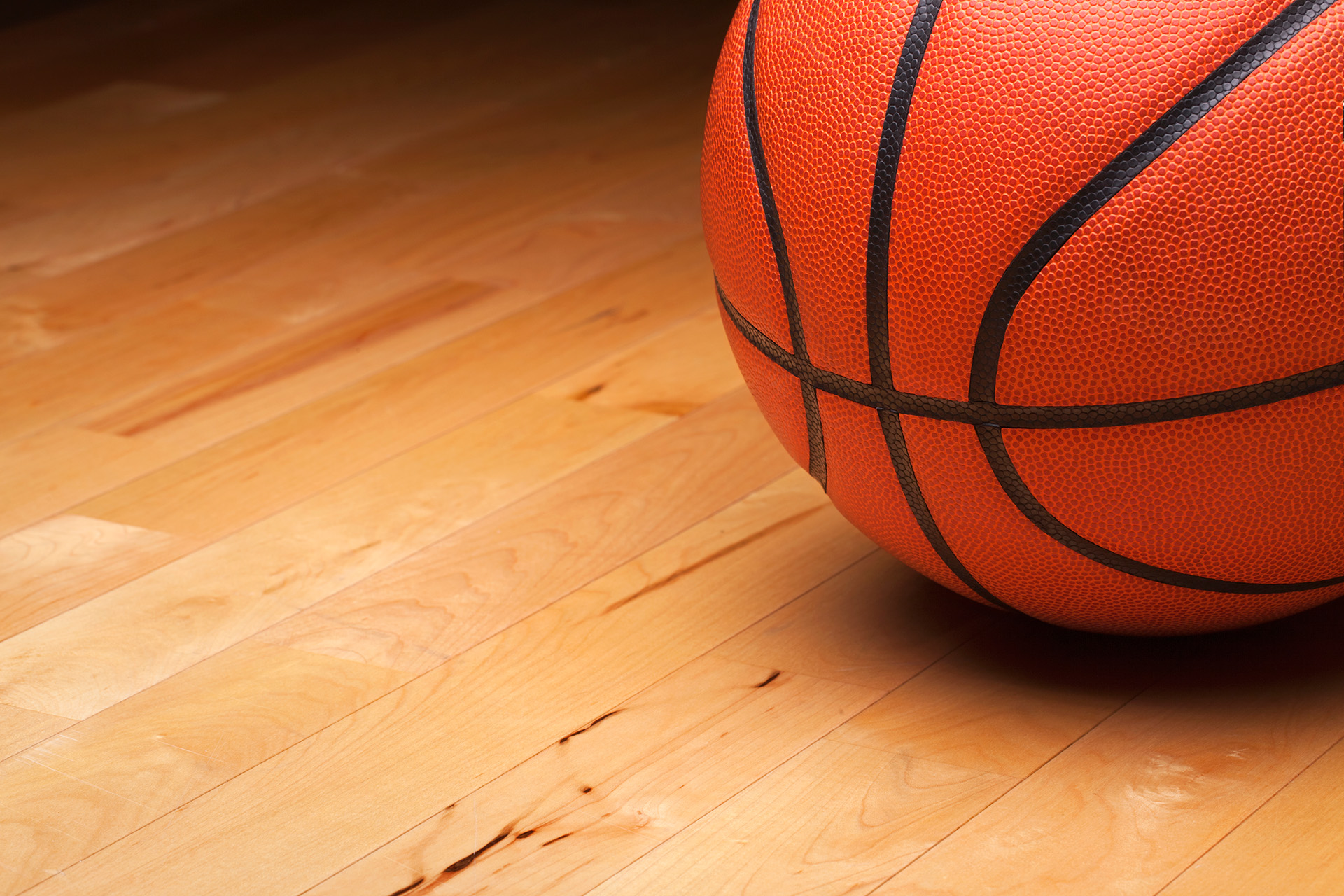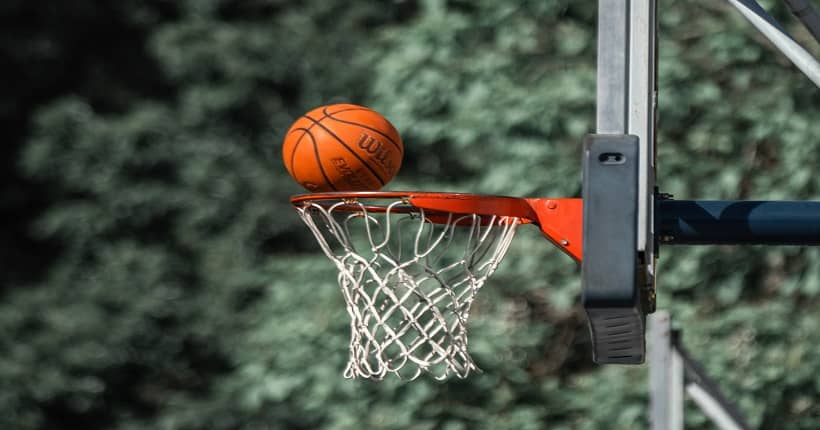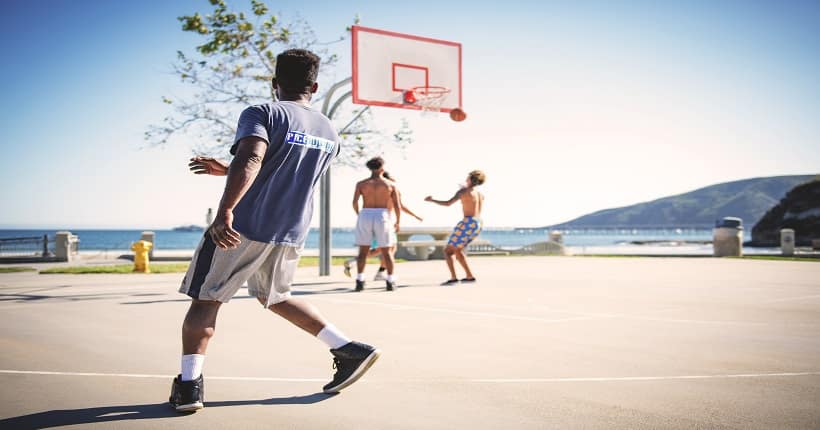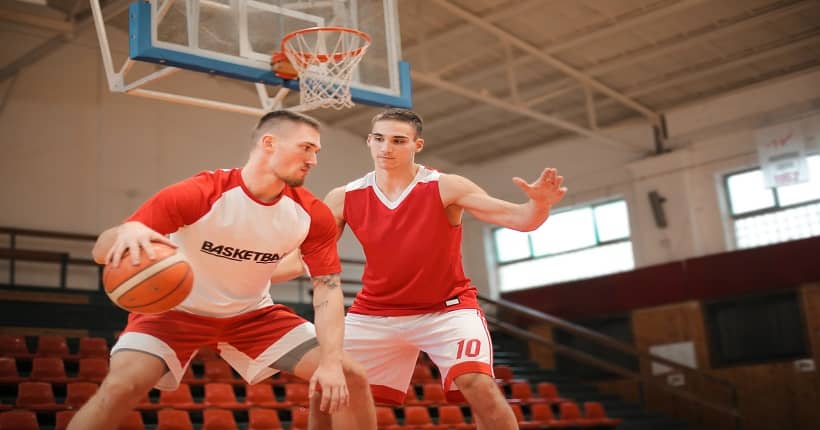What Is A Dead Spot On A Basketball Court?
A dead spot on a basketball court is an area that lacks proper bounce or consistency when the ball is dribbled or passed on it. Dead spots can occur due to various reasons, such as uneven surfaces, worn-out flooring, or poor maintenance.
Basketball players often encounter dead spots during games or practice sessions, which can disrupt the flow of the game and affect gameplay. These areas make it difficult to control the ball and execute precise maneuvers, leading to turnovers or missed opportunities.
Dead spots can be frustrating for players and can impact the overall performance of the team. Ensuring a smooth and even playing surface is crucial to minimize the occurrence of dead spots and promote a fair and enjoyable basketball experience. Proper court maintenance and regular inspection can help identify and fix dead spots effectively.
What A Dead Spot Is
When it comes to basketball, having a smooth and consistent playing surface is essential for optimal gameplay. However, even the best-maintained courts can sometimes have areas known as dead spots. These dead spots can have a significant impact on the flow and overall performance of the game. In this section, we will delve into the definition of a dead spot on a basketball court and explore how it can affect gameplay.
Definition of a dead spot on a basketball court
A dead spot on a basketball court refers to an area where the ball does not bounce or react as it normally would on a regular playing surface. Instead of the anticipated response, the ball tends to lose velocity or abruptly change direction, causing players to stumble or lose control. Dead spots can occur due to various factors, including uneven floor construction, floor moisture, and excessive wear and tear in specific areas of the court.
To better understand the concept, imagine a basketball court with a patched-up area where the floorboards have loosened or become worn out over time. This section may not provide the same level of grip or evenness as the surrounding court, resulting in an unpredictable and less effective ball response.
How dead spots affect gameplay
Dead spots can significantly impact gameplay in several ways:
- Ball control: A dead spot can make it challenging for players to maintain control of the ball, as the unexpected change in bounce can cause it to slip out of their hands or take an erratic trajectory.
- Shot accuracy: When shooting the ball, dead spots can alter its trajectory, making it difficult for players to accurately aim their shots. This unpredictability can lead to missed shots and frustration among players.
- Player movement: Dead spots can also affect players’ movement and footwork. When running, players have to adjust their steps to compensate for the uneven response of the ball, potentially leading to stumbling or loss of balance.
- Pace of the game: The presence of dead spots can disrupt the overall flow and pace of the game. Players might need to slow down or change their strategies when approaching these areas to minimize the impact of the unpredictable ball behavior.
To ensure fair and consistent gameplay, basketball court maintenance should include regular inspections and repairs to address any potential dead spots. By understanding the definition and impact of dead spots, players and court owners can be proactive in creating an optimal playing environment, enhancing performance and enjoyment of the game.

Credit: westernsportfloors.com
Causes Of Dead Spots
In basketball, dead spots refer to areas on the court where the ball does not bounce as intended, causing disruptions in the game flow. These spots can be highly frustrating for players, resulting in missed shots, turnovers, and an overall imbalance in the game. Understanding the causes of dead spots is crucial for maintaining a fair and competitive court. Let’s delve into the factors that contribute to the formation of dead spots on a basketball court.
Factors that lead to dead spots
Various factors can lead to the formation of dead spots on a basketball court. These factors can range from the type of surface material to the maintenance practices followed. Identifying these factors can help court owners and officials take appropriate measures to minimize dead spots and ensure a smooth playing experience.
The role of surface material in dead spot formation
The type of surface material used on a basketball court plays a significant role in the formation of dead spots. Different materials have varying characteristics that can impact ball bounce. Here are some common surface materials and their effect on dead spot formation:
| Surface Material | Effect on Dead Spot Formation |
|---|---|
| Concrete | Concrete surfaces are prone to developing dead spots due to their hard nature. The lack of flexibility in the material reduces ball bounce, leading to dead spots. |
| Wood | Wooden courts are generally more forgiving when it comes to dead spot formation. The natural flexibility of wood allows for better ball bounce, minimizing the occurrence of dead spots. |
| Asphalt | Asphalt is another commonly used material for outdoor basketball courts. However, its dense and rigid nature can result in dead spots, especially if the surface is poorly maintained. |
In addition to the surface material, the age and condition of the court also play a role. Over time, wear and tear can cause irregularities in the surface, leading to the development of dead spots. Regular maintenance and repairs can help counteract these issues and promote a consistent ball bounce throughout the court.
Understanding the causes of dead spots on a basketball court is essential for creating an optimal playing environment. By addressing issues related to surface material, regular maintenance, and repair, court owners and officials can ensure a fair and enjoyable game for all players.
Identifying And Addressing Dead Spots
Dead spots on a basketball court can significantly impact the game, affecting the flow, speed, and overall performance of players. These are areas on the court where the ball tends to bounce inconsistently or lose momentum, disrupting the natural rhythm of the game. Identifying and addressing dead spots is crucial for maintaining a fair and enjoyable playing surface. In this section, we will highlight the signs of dead spots on a basketball court and provide step-by-step instructions on how to fix or prevent them.
Signs of Dead Spots on a Basketball Court
Recognizing the signs of dead spots can save you from dealing with unexpected challenges during a game. Here are some common indicators that a basketball court may have dead spots:
- Ball bounce inconsistency: When certain areas of the court cause the ball to bounce higher or lower than expected, it may indicate the presence of a dead spot.
- Poor ball roll: If the ball rolls erratically or unpredictably in specific areas, it suggests a dead spot on the court.
- Inconsistent shooting accuracy: Players experiencing uncharacteristic misses or airballs in particular spots on the court could be a sign of dead spots affecting their shooting.
- Abnormal ball behavior: When the ball drifts off course or changes direction unexpectedly, it often indicates the presence of dead spots.
- Anomalies in court surface: Visually inspect the court for any irregularities, such as cracks, uneven patches, or worn-out areas. These can contribute to dead spots.
Steps to Fix or Prevent Dead Spots
Fixing or preventing dead spots requires proactive measures to ensure a seamless playing experience. Here are the steps you can follow:
- Surface inspection: Regularly inspect the basketball court for any signs of damage, wear, or unevenness. Dispose of any debris or foreign objects to eliminate potential dead spot areas.
- Deep cleaning: Thoroughly clean the court to remove dust, dirt, and greasy substances that can affect the ball’s bounce and roll. Use appropriate cleaning solutions and equipment to prevent residue buildup.
- Resurfacing: If dead spots persist despite cleaning, consider resurfacing the affected areas. Apply a fresh layer of court surface material or consult with professionals to restore the court’s uniformity.
- Leveling: Uneven surfaces can contribute to dead spots. Utilize leveling techniques, such as filling cracks, smoothing rough patches, or adjusting the floorboards, to ensure consistent ball movement across the court.
- Regular maintenance: Implement a routine maintenance schedule, including cleaning, checking for surface irregularities, and performing necessary repairs. Continuously monitoring and addressing issues promptly can prevent dead spots from reoccurring.
By identifying the signs of dead spots and actively taking steps to fix or prevent them, you can maintain a high-quality basketball court that enhances the game experience for both players and spectators. Incorporate these strategies into your court maintenance routine to keep it in top shape and ensure optimal performance.
Effect On Ball Movement
Impaired dribbling on dead spots
Dribbling is a fundamental skill in basketball, allowing players to maneuver the ball effectively while maintaining control. However, dead spots on a basketball court can greatly impair the dribbling ability of players. Dead spots refer to areas on the court where the ball fails to bounce back properly, often resulting in an unpredictable and uneven bounce. This inconsistent bounce makes it difficult for players to maintain their dribble rhythm and control the ball effectively. When encountering a dead spot while dribbling, the ball may slow down, lose momentum, or even veer off in an unexpected direction, catching the player off guard. This not only disrupts the flow of the game but also puts the offensive player at a disadvantage, making it easier for defenders to steal the ball.
Challenges in passing and shooting
In addition to impaired dribbling, dead spots on a basketball court also pose challenges in passing and shooting. Passing is a vital aspect of the game, allowing players to move the ball quickly, efficiently, and accurately to their teammates. However, dead spots can disrupt the trajectory of a pass, causing the ball to veer off course or drop unpredictably. This can undermine the effectiveness of the pass, making it easier for defenders to intercept or deflect the ball. Similarly, dead spots can also affect shooting accuracy. When players release the ball for a shot, they rely on a consistent and reliable bounce off the court to gauge the necessary force and angle. Dead spots compromise this predictability, leading to missed shots and frustration for players.
To summarize, dead spots on a basketball court have a significant impact on ball movement. They impair dribbling by introducing inconsistency in the bounce, making it challenging for players to maintain control. Additionally, dead spots pose challenges in passing, causing the ball to deviate from its intended path and making it easier for defenders to disrupt. These dead spots also affect shooting accuracy, leading to missed shots and frustration. It is crucial for players to adapt and adjust their technique when encountering dead spots in order to overcome these challenges effectively.
Influence On Player Performance
Dead spots on a basketball court can significantly impact a player’s performance. These areas, where the basketball does not bounce or roll as expected, can pose challenges that affect a player’s agility, footing, and risk of injury.
Uneven footing and its impact on agility
One of the consequences of dead spots on a basketball court is the effect on a player’s footing. When a player encounters a dead spot while running or changing direction, it can disrupt their balance and footing, making it difficult to execute quick and agile movements. This lack of stability can hinder a player’s ability to maneuver and respond swiftly to the game’s fast-paced nature.
Moreover, the irregular footing caused by dead spots can force players to adjust their movements on the spot, disrupting their rhythm and flow. This constant adaptation not only slows down the player but also limits their ability to perform complex maneuvers such as crossovers or quick cuts.
Risks of injury due to dead spots
Dead spots on a basketball court can also increase the risks of injury for players. When a player unexpectedly encounters a dead spot while dribbling or landing after a jump, it can cause them to lose their balance and stability. This sudden loss of stability could lead to sprained ankles, twisted knees, or even more severe injuries if the player falls awkwardly.
In addition to the immediate risk of injury, the repeated exposure to dead spots can have long-term consequences on a player’s body. Continually adjusting their movements to compensate for the irregularities can put extra stress on certain joints and muscles, resulting in chronic pain or even career-threatening injuries over time.
Therefore, addressing dead spots on a basketball court should be a priority for players and court owners alike. Regular maintenance and inspection of the court’s surface can help identify and repair dead spots promptly, ensuring a safer playing environment for all.
Proper Court Maintenance
Proper court maintenance is essential to ensure that basketball players can perform at their best and avoid any unexpected mishaps during a game. One crucial aspect of court maintenance is addressing and preventing dead spots on the basketball court. Dead spots are areas on the court where the ball does not bounce as expected or rolls inconsistently, negatively impacting the flow of the game and player performance. In this section, we will explore the importance of regular cleaning and upkeep as well as the significance of inspecting for dead spots.
Regular cleaning and upkeep
In order to maintain the overall quality of the basketball court and prevent dead spots, regular cleaning and upkeep are necessary. By following a routine cleaning schedule, you can remove any debris, dust, or dirt that may accumulate over time. Here are a few steps for proper court cleaning:
Sweep the court surface using a large broom to remove loose dirt and debris. This helps to prevent the accumulation of dirt that can lead to dead spots.
Use a high-quality detergent or specialized court cleaner to mop the entire surface thoroughly. Be sure to follow the manufacturer’s instructions for dilution and application.
For more stubborn stains or dirt buildup, consider using a scrub brush or specialized cleaning equipment designed for sports courts.
After cleaning, rinse the court surface with clean water to ensure that no residual chemical or soap is left behind.
Finally, inspect the surface for any damages or potential dead spots that may require further attention or repair.
Importance of inspecting for dead spots
Regular inspections of the basketball court are vital in identifying and addressing dead spots promptly. By being proactive, you can prevent potential injuries and ensure a smooth and consistent playing experience for basketball players. Here are a few reasons why inspecting for dead spots is essential:
- Player safety: Dead spots can create hazardous situations, causing players to stumble, lose balance, or even suffer from sprains or other injuries. By inspecting the court for dead spots, you can eliminate these safety risks.
- Game flow: Dead spots disrupt the natural flow of the game, leading to inconsistencies and frustration for both players and spectators. Inspecting for dead spots ensures a level playing field and enhances the overall enjoyment of the sport.
- Player performance: Basketball players rely on consistent ball bounce and movement. Dead spots hinder their ability to dribble, shoot, and pass the ball effectively. By identifying and repairing dead spots, you enable players to perform at their best.
By incorporating regular cleaning and upkeep as well as diligent inspections into your court maintenance routine, you can maintain a high-quality basketball court that is free from dead spots. This ensures a safer and more enjoyable experience for players and helps showcase the true potential of their skills. Remember, a well-maintained basketball court creates the ideal environment for players to excel and teams to thrive.
Best Practices For Court Construction
When it comes to constructing a basketball court, there are several best practices that should be followed to ensure optimal performance. One key aspect to consider is minimizing dead spots on the court. Dead spots are areas where the ball bounces inconsistently or loses momentum, impacting the flow of the game. To prevent dead spots, attention must be given to both the choice of surface material and the installation techniques employed.
Choosing the right surface material
The surface material of a basketball court plays a crucial role in determining the presence of dead spots. Choosing a high-quality material is essential for an even and consistent bounce. Here are some factors to consider:
- Durability: Opt for a surface material that withstands heavy usage, ensuring it remains resilient and maintains its optimal performance over time.
- Texture: The surface should have a smooth and consistent texture, allowing the ball to bounce predictably and uniformly across the court.
- Shock absorption: Look for a material that provides adequate shock absorption to reduce the impact on players’ joints and minimize the risk of injuries.
- Grip: A surface with good grip helps players maintain control while dribbling and prevents the ball from skidding or slipping randomly.
Proper installation techniques to minimize dead spots
The installation process of a basketball court is just as crucial as the choice of surface material when it comes to preventing dead spots. Here are some techniques to follow for optimal results:
- Leveling the surface: Before installation, ensure that the sub-base is properly leveled to avoid any irregularities that can lead to dead spots.
- Sub-drainage system: Implementing a sub-drainage system helps prevent water accumulation, which can negatively affect the court’s performance and create dead spots.
- Proper cushioning layer: Install a suitable cushioning layer between the sub-base and the playing surface to absorb impact, enhance playability, and reduce the risk of dead spots.
- Professional installation: Entrust the installation process to experienced professionals who understand the complexities involved in creating a high-quality basketball court.
By carefully considering the choice of surface material and adhering to proper installation techniques, dead spots on a basketball court can be minimized, providing players with a smooth and consistent playing experience. Ensuring these best practices are followed will contribute to the overall enjoyment of the game, allowing players to focus on their skills and performance.
Preventative Measures For Dead Spot Formation
Dead spots on a basketball court can be a real nuisance, hindering players’ performance and affecting the overall game experience. Fortunately, there are several preventative measures you can take to minimize dead spot formation and ensure a smooth playing surface. By incorporating maintenance routines and implementing strategic strategies, you can proactively address dead spots and keep your basketball court in prime condition.
Strategies to Minimize Dead Spot Formation
When it comes to preventing dead spots on a basketball court, implementing effective strategies is crucial. Below are a few strategies that can help minimize dead spot formation:
Incorporating Maintenance Routines to Prevent Dead Spots
Maintenance routines play a vital role in preventing dead spots on a basketball court. By following a regular maintenance schedule, you can ensure that the court remains in optimal condition.
Here are some maintenance routines that can help prevent dead spots:
- Cleaning the court regularly: Regularly sweep or vacuum the court to remove any dirt, debris, or dust that can accumulate and potentially cause dead spots.
- Inspecting for damage: Conduct regular inspections to identify any areas that may be susceptible to dead spot formation. Look out for loose tiles, cracks, or other signs of wear and tear.
- Repairing damaged areas promptly: If you come across any damaged spots, it’s essential to repair them as soon as possible. Prompt repairs can prevent dead spots from worsening and negatively impacting the court’s playing surface.
By incorporating these maintenance routines into your regular court upkeep, you can proactively prevent dead spot formation and maintain a high-quality playing surface.
Frequently Asked Questions Of What Is A Dead Spot On A Basketball Court
What Is A Dead Spot On A Basketball Court?
A dead spot on a basketball court refers to an area where the ball does not bounce properly, causing disruptions to the game flow.
How Does A Dead Spot Form On A Basketball Court?
Dead spots on a basketball court can form due to various factors such as uneven surface, poor maintenance, or worn-out floorboards.
What Causes The Ball To Go Dead On A Basketball Court?
The ball can go dead on a basketball court due to dust buildup, moisture, damaged floor surface, or irregularities in the court’s construction.
Can Dead Spots Be Fixed On A Basketball Court?
Yes, dead spots on a basketball court can be fixed through regular maintenance, cleaning, resurfacing, or even replacing damaged floorboards.
How Do Dead Spots Affect The Game Of Basketball?
Dead spots on a basketball court can affect the game by causing unpredictable bounces, leading to turnovers, disrupted plays, and decreased overall performance.
Conclusion
Dead spots on a basketball court can severely impact the game and player performance. These areas of the court where the ball does not bounce properly can disrupt the flow of the game and hinder players’ ability to execute plays effectively.
Identifying and fixing dead spots is crucial for maintaining a fair and enjoyable basketball experience. Remember, regular court maintenance and proper equipment can help minimize the occurrence of dead spots.







